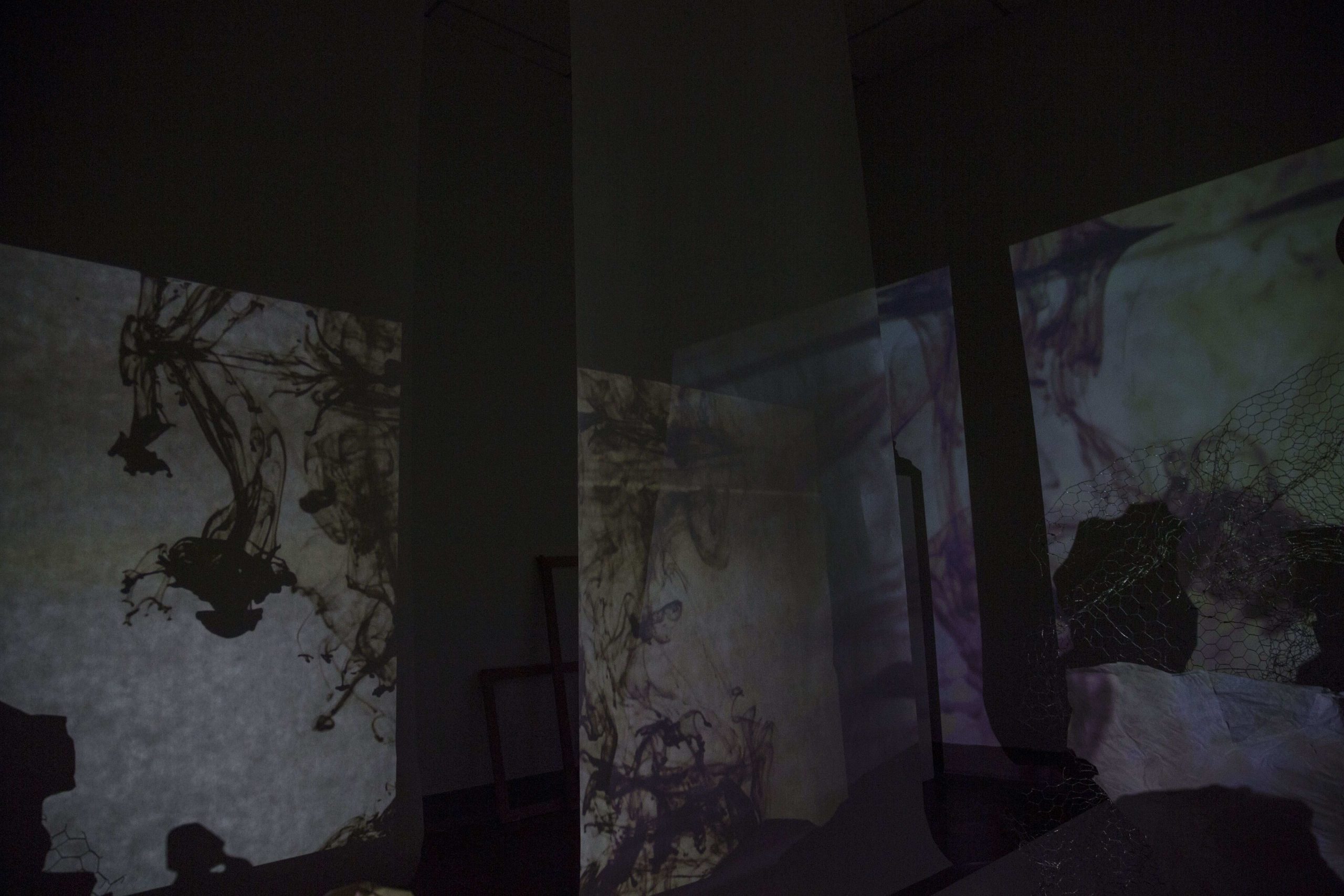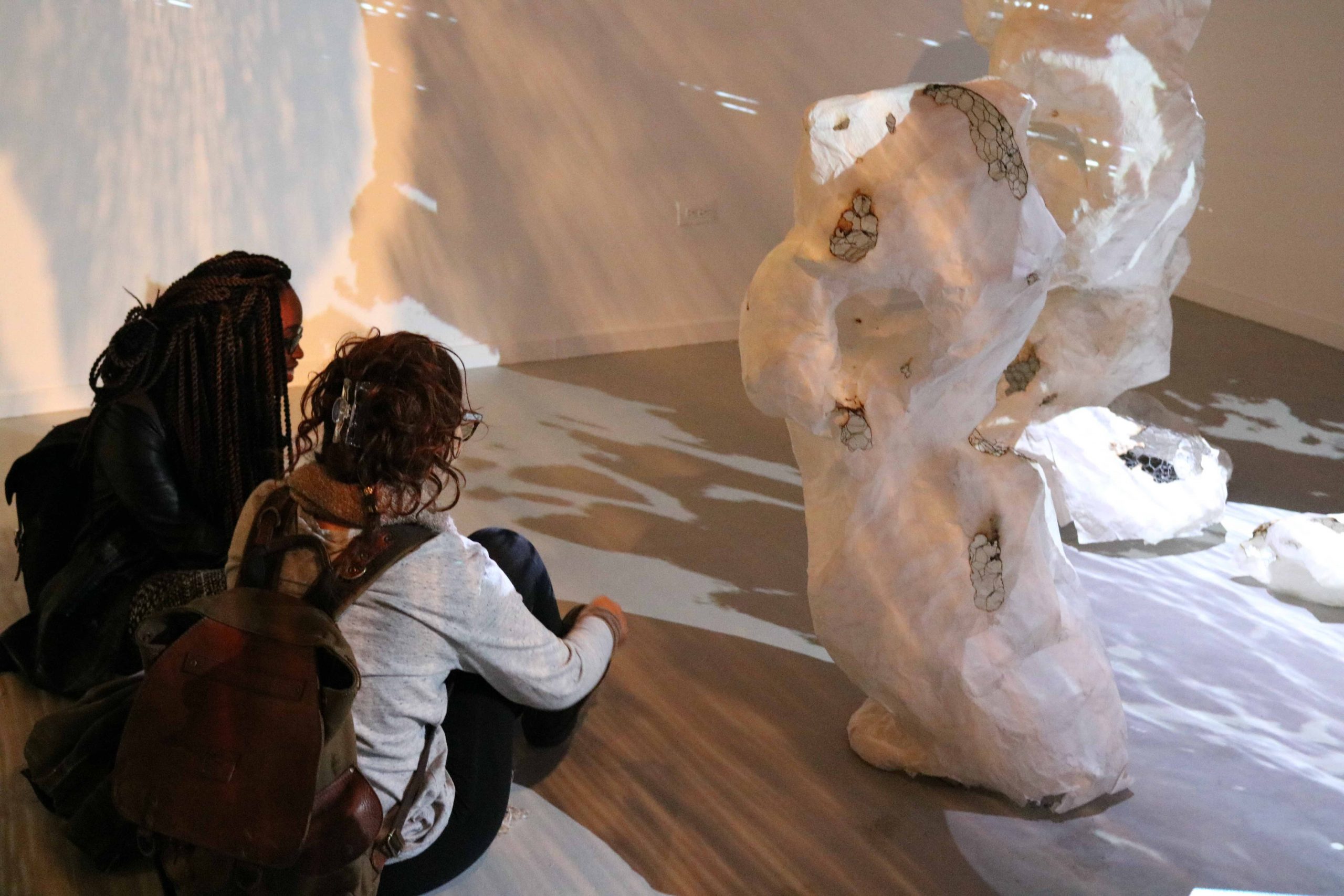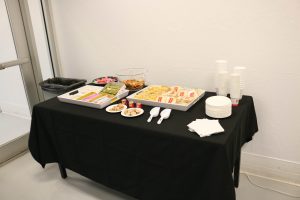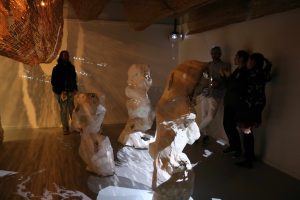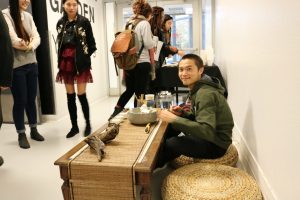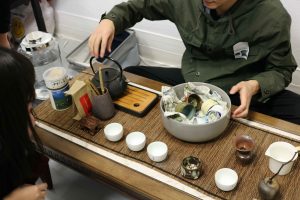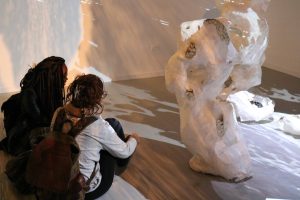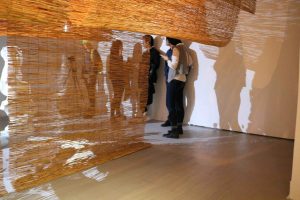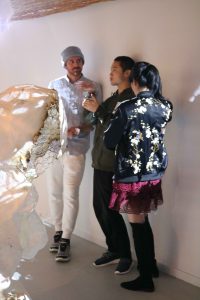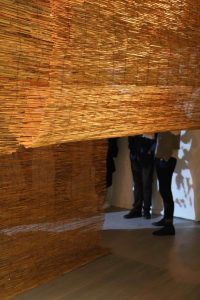Sensory Garden
Yinjie Deng
November 3 – November 22, 2016
Gallery X
Contributing Artists
Yinjie Deng
Exhibition Statement as Preserved in the SUGS/SITE Archives:
In the exhibition Sensory Garden, I want to create an environment influenced by my hybrid, easter, and western education. Responding to the exhibition space, I compose a series of scenes that communicate with the scenes that communicate with the senses and combine traditional ways of building Chinese gardens with western design aesthetics. Moving from structure to structure, visitors can view a series of carefully composed scenes, unrolling like a scroll of landscape paintings, with “borrowed” scenery (借景 jiejing), in the form of video projections, introducing unexpected windows into environments outside the garden; extending the space.
Though this exhibition miniaturizes nature, as in traditional Chinese gardens, it also emphasizes the sensory experience of nature within the gallery. Through sight, smell, sound, touch and imaging, I lead audiences into a space isolated, both physically and mentally, allowing them to create in their own minds. This desire for an experience that activates the senses informed many of my decisions regarding material and its relationship to the body. I want them to express a balance of everything – yin and yang.
Artificial rocks, of paper and wire, are the main forms in the space, creating the gardens pathway and in their height blocking and revealing the space to the viewer. The rocks are burned in certain spots as a reminder of the destruction of Chinese gardens in China, since the Song Dynasty by fire and by an interest in western culture. Covering the surface of these rocks and the walls is projected, “borrowed” scenery of ink dropping into water. This work to the illusion that the garden environment is much bigger then it seems, while representing Chinese traditional paintings called ShanShui (山水, Chinese landscape). Chinese landscape paintings, do not rely solely on realism, but on the emotional sense of the artist towards the landscape allowing for a melding of experience and vision. Every human has a garden inside them and thrugh encounters with a perfect earth, the growth towards the landscape allowing for a melding of experience and vision. Every human has a garden inside them and through encounters with a perfect earth, the growth and flourishing of that garden can encourage.
Upon entering the gallery, I chose to hang bamboo reeds, which meet traditional Chinese aesthetic taste and symbolize a humble, amiable, virtuous and unwavering spirit of conduct and flexibility. The pure material also brings nature into the interior, contrasting the stiff, concrete and stel of the structure surrounding it. The horizontal gaps obscure and reveal, like the rocks in the space. Obscuring the garden is a common design method of the traditional Chinese garden, only allowing the garden to be fully seen and experiences once a viewer is within it.
A combination of Chinese Kunqu, piano and cello fills the space as well. The song references the Kunqu stroy, Mudanting, in which the main character is a young girl from a wealthy family who sings of being young and beautiful, but without appreciation. The Chinese garden is similar, it’s beauty often over looked.
Programs
November 3, 4:00 – 6:00PM
Gallery X
Exhibition Material

SAIC’s student-run fnews Magazine covered Sensory Garden and the exhibition’s programming.
A Test Run for Test Site, SUG’s new Summer Residency



